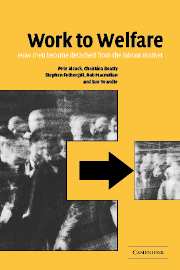References
Published online by Cambridge University Press: 22 September 2009
Summary

- Type
- Chapter
- Information
- Work to WelfareHow Men Become Detached from the Labour Market, pp. 275 - 283Publisher: Cambridge University PressPrint publication year: 2003

